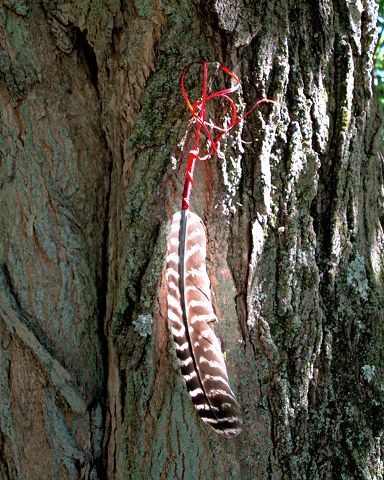The Delaware Indians of Holmes County
Any history of Indians in Ohio starts with the Mound Builder cultures. These people the Adena, Hopewell, Mississippian and other unnamed cultures existed between 3500 B.C. and the 1600s. Over long millennia these cultures evolved into the Native Americans that the first settlers of the Americas encountered.
Here in Holmes County the Delaware Indians were the predominant tribe that followed the ancient mound-building cultures. However, according to Dave Reed of the Killbuck Valley Historical Society, There were some other tribes in the area, like the Shawnee and the Iroquois, but primarily it was the Delaware Indians in Holmes County.
Interestingly the Delaware people didnt come from the ancient Ohio mound-building cultures. This tribe, which calls itself the Lenni-Lenape, meaning pure or original man, has its origins along the Delaware River that runs through Pennsylvania to the Atlantic Ocean on the East Coast.
Other tribes lived in that part of the United States, most notably the Iroquois were more aggressive than the Delaware people. It is thought that during the late 1600s the Iroquois began driving the Delawares westward. In fact Delaware Indians were likely already inhabiting Ohio when William Penn first reached our shores in 1682.
Penn was among the first to negotiate with Native Americans, and he did so with the Delaware tribe. He signed a treaty with them in 1683 and purchased tracts of land in Pennsylvania, forcing them to move westward.
Between pressure from Penn, other colonists and the Iroquois, the Delaware people eventually ended up in Central Ohio and Holmes County, and other nearby counties also became their new homeland. The years between 1740 and 1800 saw the largest population of Delawares in Holmes County, but in the early 1800s the population started to dwindle once more.
It was a combination of things, Reed said. The settlers were moving in and just taking over their land. The Iroquois tribes, they were very aggressive tribes, and when they came down, they kind of forced the Delaware and the Shawnee out as well. They [the Iroquois] came down from the northern part of the state and from the East Coast area.
By the time Holmes County was formed, the only Indians that were left were the wanderers. They would appear out of the woods to visit sites that had been important to them or to trade with the settlers before vanishing once more. The Delawares had been pushed out of Ohio, westward into Indiana, Missouri, Kansas and finally to the Indian Territory in Oklahoma. Others went north with the Iroquois to Ontario, Canada.
All the settlers knew of the Delaware were tales of the villages that once dotted Holmes County. Even today we dont know the exact locations of many Delaware villages. Its kind of questionable, Reed said, Because nobody has actually done any excavation. Its hearsay from the past.
According to the legends, however, there were at least six villages including Twin Springs, Troyers Hollow, a village east of Holmesville, another near Benton, a village eight miles north of present-day Millersburg and a small settlement of just a few wigwams just above present-day Killbuck. Because the Delaware moved around often, it is likely there were many more villages and camps throughout Holmes County.
We may not know exactly where all the settlements were, but we do know a lot about Delaware culture and how they lived. They were a spiritual people filled with reverence for the world around them and for their deities who they celebrated through song, dance and ritual.
Day-to-day life revolved around wigwams, which were small huts made from bark. Each wigwam had a hole in the center of the roof with a hearth underneath for smoke to vent. Delawares spent most of their lives outdoors, but they would sleep in their wigwams and gather around the central hearth at mealtimes in the winter. They had secondary hearths outside of their wigwams for cooking in the summer.
When it came to food, they hunted the game that youll find in Holmes County, and they also fished the rivers and streams. They gathered root vegetables, berries, nuts, and herbs and grew their own corn, which they would either roast on a fire or use to make cornmeal, often turning it into corn bread, dumplings and heavy cakes. In addition to foodstuffs the Delaware also farmed tobacco, which was used both recreationally and as a part of their rituals.
The Delaware had their own unique clothing style based on the traditions of their culture. Men would often shave their heads, particularly the warriors, into Mohawks or topknots, which they would then decorate with an eagle feather that symbolized courage. The women wore their hair in long braids. Clothing was simple, usually buckskin, decorated with feathers, porcupine quills or beads made from shells. Unlike other Native American cultures, Delaware chieftains dressed more simply without the ornate headdresses.
Delawares would also tattoo themselves and paint their faces, arms, legs and chests with homemade paints. The tattoos were mostly animals snakes, birds and others and each color of paint held a different meaning.
Today many of these traditions are still practiced by the Delaware people even though they no longer call Holmes County their home. Nowadays youll find the Lenape tribes in the west and north, mostly in Oklahoma and Canada.

